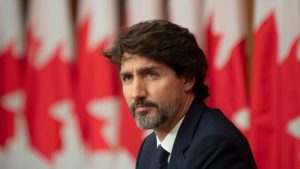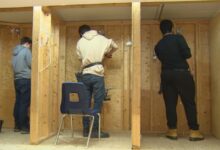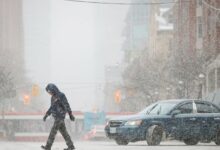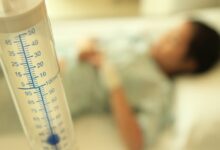Trudeau promises federal help for COVID hotspots in Quebec, Ontario, Alberta

Prime Minister Justin Trudeau today promised more support for local public health units in emerging COVID-19 hotspots — some of which are struggling with testing backlogs and a contact tracing system that can’t keep up with the number of new cases being reported.
Trudeau told reporters that the government has signed agreements with Alberta, Ontario and Quebec to supply federal bureaucrats to help those provinces with their contact tracing — the process of connecting with people who may have been in close contact with a positive case of the novel coronavirus.
Contact tracers urge those who may have been exposed to self-isolate or get a test to avoid further spread — but their work can be undermined by delays in contacting those at-risk people.
Most of the federal employees tasked to provincial contract-tracing efforts are being pulled from Statistics Canada.
“Contact tracing is extremely effective in terms of tracking down cases, especially if it’s done in a very timely manner,” Trudeau said. “Once you start getting into backlogs, apparently, it becomes more difficult to have contact tracing be as effective.”
Trudeau said 500 public servants will be on hand to support Ontario’s tracing efforts, with 30 tracers specifically assigned to the city of Ottawa.
The nation’s capital has emerged as a hotspot in the province. The Ottawa public health unit warned last Friday that the system is at a breaking point; dozens of new cases are being reported each day, each with a list of possible contacts to track down.
“Our health care system is in crisis. Labs are working beyond capacity, causing dangerous backlogs, which affects our contact tracing & case management. Hospitals are nearing capacity, and we’re seeing more outbreaks in LTC homes. Our system can’t handle much more of this,” the Ottawa public health unit said in a tweet.
Toronto Public Health, which is also grappling with a sharp increase in cases in recent weeks, said it would dial back its contact tracing efforts and instead focus for now on cases tied to outbreaks in facilities such as hospitals, long-term care homes, retirement homes, homeless shelters, schools and child care centres.
Eileen de Villa, Toronto’s medical officer of health, said adding a modest number of contact tracers will do little to reduce the backlog in her city.
She said the city already employs 700 case and contact managers and it still can’t keep up.
“To be frank, I expect we could have another 700 people added to the ranks and still not be able to contact trade with the same reach and results as when infection rates were lower. It’s an indicator of how serious the spread of infection is,” she said.
Instead, she said, the province should initiate a month-long shutdown of indoor dining in bars and restaurants — places she said account for a large number of cases.
An outbreak at a Toronto-area bar, the Yonge St. Warehouse, created 1,700 possible exposures after five staff members tested positive. A similar outbreak at Regulars Bar resulted in 600 exposures, she said.
Trudeau also announced some federal laboratories will be re-purposed to help provinces ramp up testing. He said the labs will run 1,000 tests a day in Ontario, with more capacity to be brought online in the coming days.
“We’re reaching out to more national laboratories to do their part as well. This is about all hands on deck at this point,” Trudeau said.
Dr. Theresa Tam, the country’s chief public health officer, said she’s heard that many people working in public health are “feeling very tired.”
She said Canadians need to limit social contacts and stay home as much as possible. “The key is to have everybody working in the same direction so public health isn’t overwhelmed,” she said. “What you want is people not having to get tested.”
Trudeau was tested last month
Questioned by reporters in the wake of U.S. President Donald Trump being hospitalized with COVID-19, Trudeau confirmed today that he was tested for the virus in early September after he reported a “throat tickle.”
He self-isolated for a few days before returning to work, based on his doctor’s instructions, he said. The prime minister’s test result had not been disclosed before today.
Asked if he thought provinces have spent wisely the $19 billion in federal funds set aside through the “safe restart” agreement, Trudeau said the issue isn’t the money alone — there’s a shortage of people available to do the tracing and lab work.
“It’s about all of us working together and keeping as many Canadians as possible safe from this virus as quickly as we can,” he said.
Ontario has dramatically expanded its testing capacity since the onset of the pandemic — in April, the province peaked at 13,000 tests a day and is running as high as 40,000 daily tests now — but the demand for testing has built up a sizeable backlog.
After weeks of hours-long lineups at some centres, Ontario ordered a two-day shutdown in Ottawa, Toronto and Peel Region — with testing to resume Tuesday through an appointment-only process.
Ontario Premier Doug Ford said Monday that maintaining staffing and procuring reagents — the ingredients for any chemical-based test — have both proven difficult in recent days.
“Right now, we have an issue with getting enough diagnostic lab technicians,” Ford said.
“There’s also a worldwide shortage of the testing mechanism. We’re working with Roche, we’re working with Abbott, we’re working with the federal government to see if we can get these rapid tests. It’s going to be an absolute game-changer,” he said.
Prime Minister Justin Trudeau today promised more support for local public health units in emerging COVID-19 hotspots — some of which are struggling with testing backlogs and a contact tracing system that can’t keep up with the number of new cases being reported.
Trudeau told reporters that the government has signed agreements with Alberta, Ontario and Quebec to supply federal bureaucrats to help those provinces with their contact tracing — the process of connecting with people who may have been in close contact with a positive case of the novel coronavirus.
Contact tracers urge those who may have been exposed to self-isolate or get a test to avoid further spread — but their work can be undermined by delays in contacting those at-risk people.
Most of the federal employees tasked to provincial contract-tracing efforts are being pulled from Statistics Canada.
“Contact tracing is extremely effective in terms of tracking down cases, especially if it’s done in a very timely manner,” Trudeau said. “Once you start getting into backlogs, apparently, it becomes more difficult to have contact tracing be as effective.”
Trudeau said 500 public servants will be on hand to support Ontario’s tracing efforts, with 30 tracers specifically assigned to the city of Ottawa.
The nation’s capital has emerged as a hotspot in the province. The Ottawa public health unit warned last Friday that the system is at a breaking point; dozens of new cases are being reported each day, each with a list of possible contacts to track down.
“Our health care system is in crisis. Labs are working beyond capacity, causing dangerous backlogs, which affects our contact tracing & case management. Hospitals are nearing capacity, and we’re seeing more outbreaks in LTC homes. Our system can’t handle much more of this,” the Ottawa public health unit said in a tweet.
Toronto Public Health, which is also grappling with a sharp increase in cases in recent weeks, said it would dial back its contact tracing efforts and instead focus for now on cases tied to outbreaks in facilities such as hospitals, long-term care homes, retirement homes, homeless shelters, schools and child care centres.
Eileen de Villa, Toronto’s medical officer of health, said adding a modest number of contact tracers will do little to reduce the backlog in her city.
She said the city already employs 700 case and contact managers and it still can’t keep up.
“To be frank, I expect we could have another 700 people added to the ranks and still not be able to contact trade with the same reach and results as when infection rates were lower. It’s an indicator of how serious the spread of infection is,” she said.
Instead, she said, the province should initiate a month-long shutdown of indoor dining in bars and restaurants — places she said account for a large number of cases.
An outbreak at a Toronto-area bar, the Yonge St. Warehouse, created 1,700 possible exposures after five staff members tested positive. A similar outbreak at Regulars Bar resulted in 600 exposures, she said.
Trudeau also announced some federal laboratories will be re-purposed to help provinces ramp up testing. He said the labs will run 1,000 tests a day in Ontario, with more capacity to be brought online in the coming days.
“We’re reaching out to more national laboratories to do their part as well. This is about all hands on deck at this point,” Trudeau said.
Dr. Theresa Tam, the country’s chief public health officer, said she’s heard that many people working in public health are “feeling very tired.”
She said Canadians need to limit social contacts and stay home as much as possible. “The key is to have everybody working in the same direction so public health isn’t overwhelmed,” she said. “What you want is people not having to get tested.”
Trudeau was tested last month
Questioned by reporters in the wake of U.S. President Donald Trump being hospitalized with COVID-19, Trudeau confirmed today that he was tested for the virus in early September after he reported a “throat tickle.”
He self-isolated for a few days before returning to work, based on his doctor’s instructions, he said. The prime minister’s test result had not been disclosed before today.
Asked if he thought provinces have spent wisely the $19 billion in federal funds set aside through the “safe restart” agreement, Trudeau said the issue isn’t the money alone — there’s a shortage of people available to do the tracing and lab work.
“It’s about all of us working together and keeping as many Canadians as possible safe from this virus as quickly as we can,” he said.
Ontario has dramatically expanded its testing capacity since the onset of the pandemic — in April, the province peaked at 13,000 tests a day and is running as high as 40,000 daily tests now — but the demand for testing has built up a sizeable backlog.
After weeks of hours-long lineups at some centres, Ontario ordered a two-day shutdown in Ottawa, Toronto and Peel Region — with testing to resume Tuesday through an appointment-only process.
Ontario Premier Doug Ford said Monday that maintaining staffing and procuring reagents — the ingredients for any chemical-based test — have both proven difficult in recent days.
“Right now, we have an issue with getting enough diagnostic lab technicians,” Ford said.
“There’s also a worldwide shortage of the testing mechanism. We’re working with Roche, we’re working with Abbott, we’re working with the federal government to see if we can get these rapid tests. It’s going to be an absolute game-changer,” he said.








Redes Sociais - Comentários